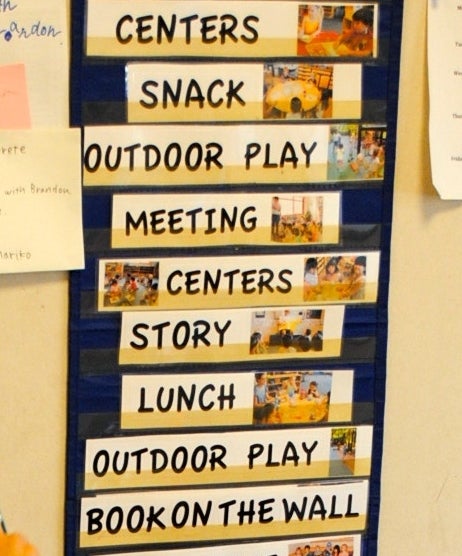
Throughout the past two months, I have had the privilege of guest teaching in nearly two dozen classrooms at five different schools.
I enjoy interacting with the children, ranging in age from 3 to 12, and I constantly marvel at the amazing things they are learning and producing in class, led by their competent and well-prepared teachers.
Teachers are an on-the-ground, in-the-trenches battalion of action researchers on child development and learning. Teachers observe children, they interact and communicate for hours every day, and many teachers spend year after year embedded with children of the same age, discovering how to best motivate, teach and guide them in the process of learning and developing. Parents and scientists can greatly benefit from the collective wisdom acquired by these professionals.
Although each classroom I have visited is unique and has its own culture and atmosphere, there is one key element featured in every classroom I have been in: Every teacher has a set schedule and routine.
I notice that in addition to providing a program of events, the children all know and refer to the posted routines as a framework and guide for behavioral expectations and procedures throughout the day.
It is clear to me, as a guest in the classroom, that the children depend on the routines to be accurate, predictable and consistent throughout their days in school. Teachers understand the significance routines hold for children.
Why children need routines
Routines provide a framework for a child’s life. Babies, toddlers, and children young and old feel secure when they know what is going to happen next. After I have a bath and brush my teeth, we will snuggle and read a story and then I will go to bed.
Routines add structure to daily activities and consistent repetition and reinforcement of routines provide opportunities to practice and strengthen skills associated with each routine. When we sit down at the table, I eat the food that is on my plate. We stay at the table until the meal is finished. I practice sitting in one spot, eating with utensils, trying new foods, and participating in conversations.
Routines include procedures teaching cause and effect allowing children to become accountable for their own actions and their consequences. When playtime is over, we pick up all the toys and put them away before we move on to the next activity.
Routines help children feel safe. When I know and can anticipate what will happen in my day I feel comfortable and in control over the choices I can make.
Why adults need routines
Routines build in procedures that remove some potential for conflict and negotiations. Picking up toys and washing hands always precedes snack time. If toys are not picked up and hands are not washed, it will not be time for snack.
Routines ensure that children’s needs are met. If my child’s bedtime is at 7:30 every day, my child will have enough hours of sleep to be well rested. When my child is well rested, he is happier, more cooperative and better behaved. Bonus: When my child is in bed by 7:30, I have time to do things I cannot do when my child is present.
Routines help organize the day. I know I can make an important phone call after lunch because nap time (or quiet reading time) is scheduled for then.
Routines minimize stress. In times of unexpected circumstances, routines may help the family operate on “auto-pilot.” I had a difficult day at work, but I know I just have to rely on the evening routines to run their course and then the children will soon be in bed.
Characteristics of effective routines
In order for routines to be beneficial for both children and the adults who care for them, routines must be consistent, predictable and clearly articulated.
Routines can be flexible and adaptive, however they should remain stable and dependable for the most part. When routines vary from the norm, it is crucial to candidly discuss the change and anticipate possible implications in a developmentally appropriate manner. Today we will not be playing outside since it is cold and rainy. We will do an activity indoors instead before we have lunch and take a nap as usual.
Routines may differ depending on circumstances. Families may have one routine for weekdays and another on weekends. There may be an alternate routine when one parent is traveling. Children are adaptive and respond well to variations in routines, keeping in mind that completely disregarding any routine is unsettling to children.
Routines will not look the same for every family just as each classroom I have visited does not have the same schedule. There will be similarities between the components of the routines, but each agenda may differ based on the environment, outside circumstances and the values of the adults in charge.
Next time you visit a classroom, look for the posted routine on the classroom wall. Notice the way children refer to the schedule and ask them about their routines and the procedures that they are expected to follow within those routines. You may be surprised at how much the children know and understand about their life in the classroom based on their routines.
Need help implementing routines in your own family? Stop and think about the structure of your days and identify what works best for your family. You may have more of a structured routine than you realized. If you need additional help and support, do not hesitate to seek out assistance!
This article was originally posted on Nurturance.